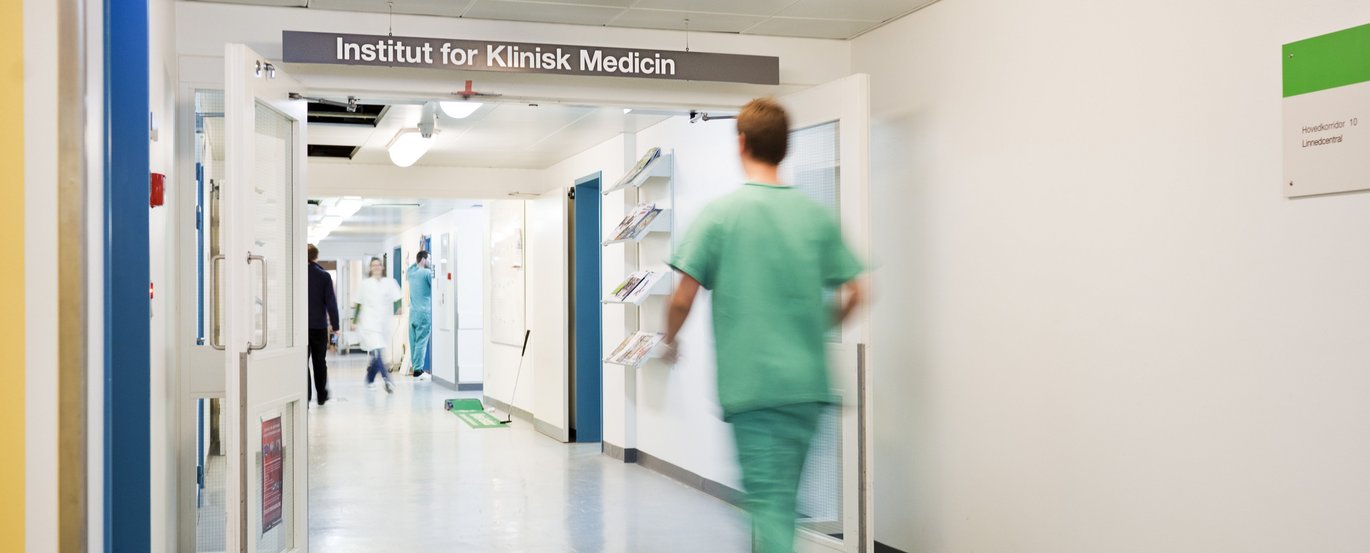Recognised research centre to close
The Stereology and Electron Microscopy Laboratory at the Department of Clinical Medicine is to close, and majority of its employees are to lose their jobs as a result.

The Department of Clinical Medicine will be forced to say goodbye to 17 employees as part of a major round of cutbacks at the department, which are being implemented due to the department ending 2015 with a deficit of DKK 21 million. Eleven of the seventeen employees who are losing their jobs are employed at the Stereology and Electron Microscopy Laboratory, which the department management team have decided to close down.
"We’re in a situation where we must prioritise and ask ourselves what we can best do without. The management team have assessed that the Stereology and Electron Microscopy Laboratory is most decentralised with regard to the clinical research. We have therefore decided to close the centre," says Department Head Kristjar Skajaa.
He goes on to say that the department management team wished to avoid an across-the-board approach and that they have therefore chosen to implement the savings in the form of centre closure.
In addition to reducing the number of staff, the department will also reduce its operating budget, which includes a grant to the Psychiatry Research Foundation that expires, and the fixed annual grant to members of academic staff (smaller pools that some academic staff have at their disposal, ed.) will be reduced by twenty per cent. The cutbacks also affect the students, as the department is revoking ten scholarships for research year students.
Too optimistic
In April, Kristjar Skajaa informed the employees that there would be a round of dismissals at the department. Initially the department head announced that between 15 and 20 employees faced losing their jobs. That figure was subsequently reduced to between 12 and 15 employees. After three employees accepted a voluntary redundancy package prior to the consultation procedure, the department head once again reduced the figure to between 9 and 12 employees.
At an unscheduled meeting of the local liaison committees on Tuesday, Skajaa could inform the participants that eight employees had received a letter of dismissal. Four had accepted a voluntary redundancy package, while two employees would not have temporary positions extended. The department must therefore say goodbye to a total of 17 employees.
Skajaa acknowledges that the number of employees losing their jobs is higher than the figure announced before the summer holidays.
"We have carried out a precise calculation of the amount of savings that are necessary in relation to the pressure that the department’s expenditure will come under in the future. Here I must note that I’ve been too optimistic in my announcement," he says.
Surprise at centre closure
The decision to close down the Stereology and Electron Microscopy Laboratory has caused surprise, not least because the centre is behind the development of methods that are today used internationally.
"The Stereology Research Laboratory has achieved extensive international recognition. Bearing this in mind, it’s quite a surprising decision, particularly in light of the university’s strategy to raise its profile and support its own internationally renowned activities," says Associate Professor Peter Holm-Nielsen, who is union representative for the medical specialists at Health and employee representative on the Faculty Liaison Committee at Health.
Peter Holm-Nielsen explains that he has argued for this point of view in the Local Liaison Committee, Faculty Liaison Committee and Main Liaison Committee, while also pointing to the lack of insight that there has been into the department's finances.
Department Head Kristjar Skajaa understands the surprise caused by the closure.
"But there would have been surprise regardless of what I decided to close down. I want to emphasise how sad I am about having to close the centre and lose its employees, and that the closure has nothing to do with the centre and its employees performing poorly."
Limited rescue plan
Together with the other members of the department management team, Kristjar Skajaa has in recent weeks attempted to ensure that part of the centre's expertise will remain available. Though it will, of course, be in a much reduced form.
"Centre Director Jens Randel Nyengaard has been co-applicant for a larger external grant for Science and Technology, which he has succeeded in getting a share of. With additional financial assistance from Aarhus University Hospital, we have been able to ensure that it will be possible to undertake some of the centre’s functions for at least the next three to four years," says Skajaa.
In addition to the centre director, two technical and administrative staff members will in future be affiliated with the Department of Histopathology under Aarhus University Hospital.
"We’re pleased to be able to do something, so that we don’t have to tear down everything. But as I said, I would much rather have avoided this all together. It will also certainly have consequences for the department in the form of fewer publications and research activities. It also causes a dramatic loss of tempo in our international collaboration, particularly when it comes to junior researchers, as the centre has attracted many visiting scientists. And some of the research groups that have previously made use of the centre’s assistance will, for example, no longer be able to get tissue samples analysed," ends Skajaa.

